Smoky Sky, Moon, Mercury, iPhone ISS test
Posted: 8 July 2024
|
Open: Sunday, 7 July 2024, 1817 MST Temperature: 93°F |
Session: 1993 Conditions: Clear, breexy |
Equipment:
12" f/8 LX600 w/StarLock
2" 24mm UWA eyepiece
2" 30mm eyepiece
12x50 binoculars
Camera:
iPhone 15 Pro Max
D850 DSLR
1824 MST: LX600 ON, StarLock OFF, High Precision OFF.
1829 MST: Viewed the thin crescent Moon, 102X and 81X. The Moon was barely visible in the eyepiece against the bright sky background.
Then updated the TLE for the night's pass of the International Space Station (ISS).
1835 MST: Relaxed on the observatory patio bench.
1933 MST: Viewed the Moon, 12x50 binoculars.
1936 MST: Smoke from two large wildfires in Utah was visible in the northern sky as sunset approached, as seen in this iPhone 15 Pro Max photo.
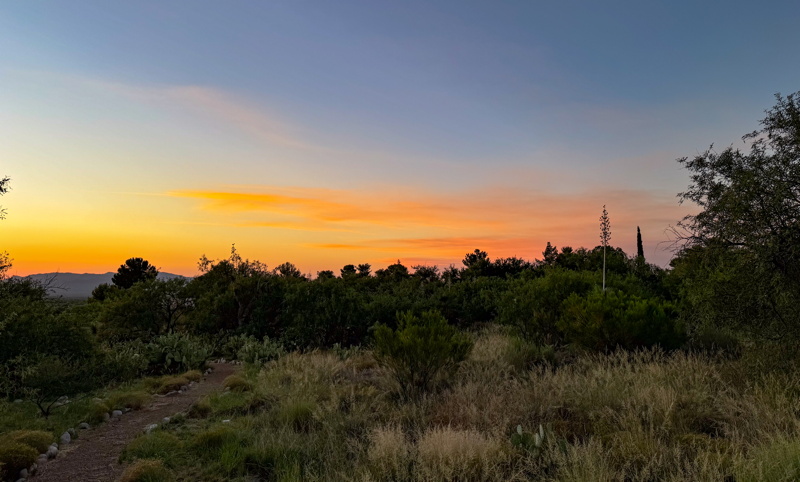
1937 MST: Sunset. Calm now.
Back in the observatory I checked the alignment of both finderscopes for the upcoming ISS pass.
1942-1958 MST: Relaxed on the bench while waiting for the sky to get darker.
Viewed the Moon and Mercury, 12x50 binoculars. Both were easily seen in the same field-of-view.
1954 MST: Moon and Mercury, D850 DSLR (f/6.3, 1/100sec, ISO 400, FL 300mm, handheld).
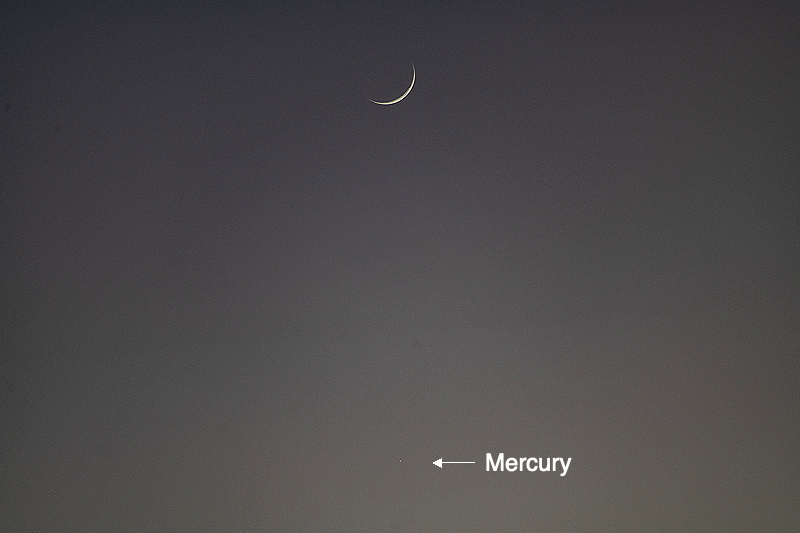
Moon in blue sky, iPhone afocal 81X, Accuview 3-axis smartphone adapter. Taken with the Camera app (1X).
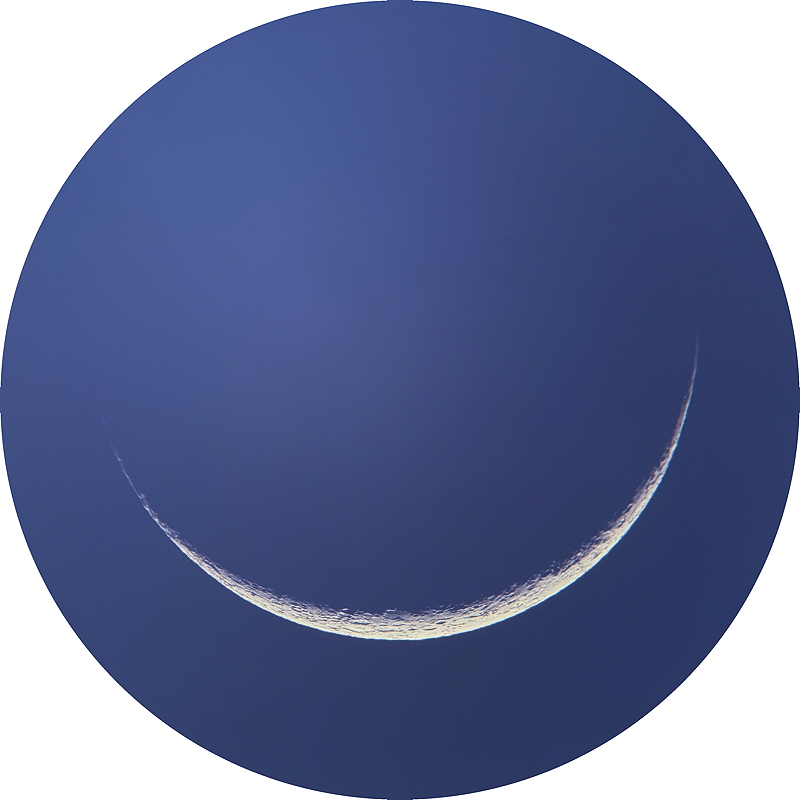
2002 MST: Returned to the bench.
2020 MST: Smoke from the Utah fires was now visible at the Zenith.
2039 MST: Moved to a higher elevation and took this D850 DSLR photograph of the western sky showing the crescent Moon, Earthshine, the planet Mercury, and smoke (f/4.8, 1/10sec, ISO 5000, FL 135mm, handheld).
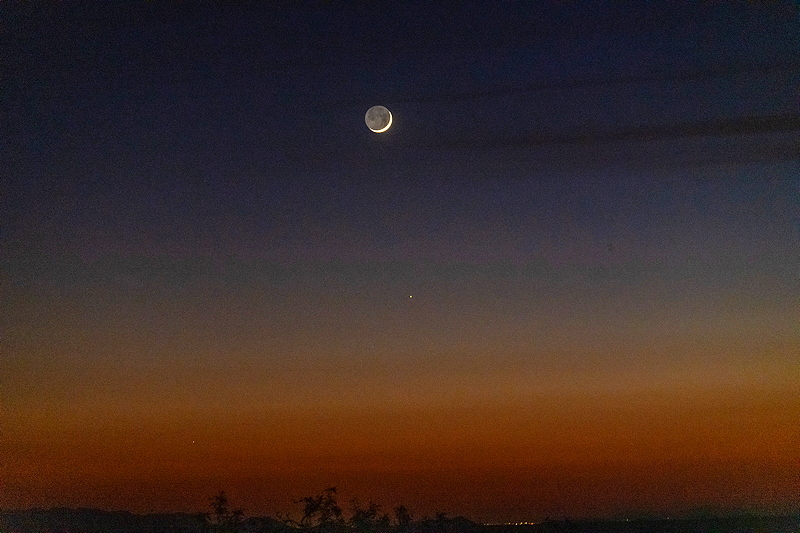
iPhone 15 Pro Max photo with the Camera app (Night Mode, 3 seconds, 1X lens, handheld).
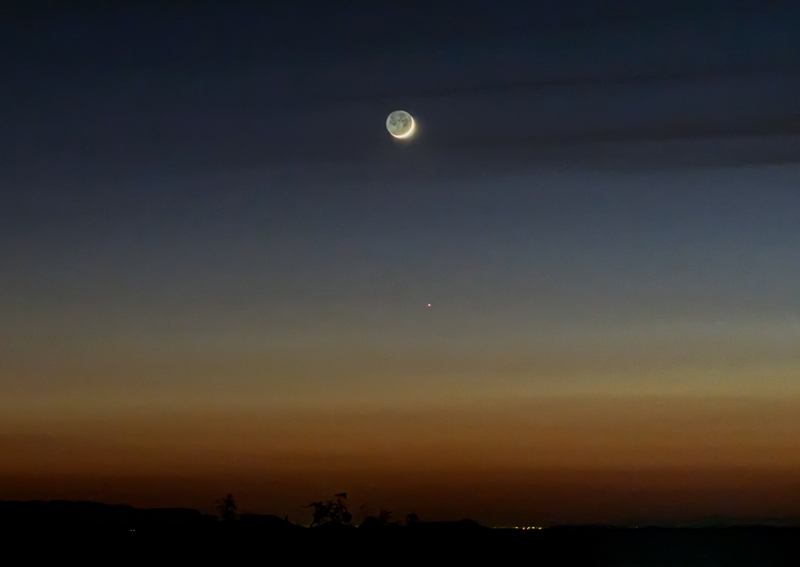
2042 MST: Back in the observatory. Prepared for the ISS pass. This would be a test using the new Apple Final Cut Camera iPhone app. Unlike the Camera app, Final Cut Camera has full manual control of exposure and focus. I set the app for HEVC format, SDR, 1080p, 240fps, 1X lens). Attached the LiDAR Cover to the iPhone. With the iPhone mounted on the 2" 30mm eyepiece, I adjusted the exposure (EV 0.0) and focus (1.00) using the star Arcturus (as a substitute for the ISS). Locked the telescope mirror.
2050 MST: The smoke was now visible in the southern sky.
2053 MST: I began the iPhone Final Cut Camera video recording and after locating the ISS, I started the telescope tracking. This image shows a single full-frame to indicate the apparent size of the ISS at 81X. The inset shows two full size images of the space station from the video.
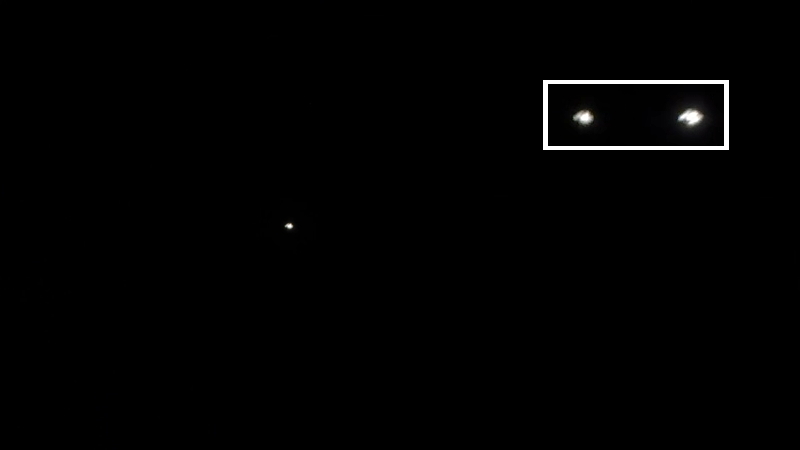
The Final Cut Camera test was successful, but I learned three things. I need to use more magnification and a better focus. And I need to reduce the exposure slightly to avoid overexposing the ISS. On my next ISS test I will use a 15mm eyepiece (163X) and a Bahtinov Mask to focus.
I had planned to do more Barnard Objects observing and imaging on this session, but with the Utah fires smoke now visible in all of the sky, I decided to end the session.
2106 MST: LX600 OFF.
|
Close: Sunday, 7 July 2024, 2116 MST Temperature: 84°F |
Session Length: 2h 59m Conditions: Clear, smoky |
Comments are welcome using Email. Please read the Email Etiquette guidance.
Cassiopeia Observatory Home Page
Copyright ©2024 Michael L. Weasner / mweasner@mac.com.
URL = http://www.weasner.com/co/Reports/2024/07/08/index.html
